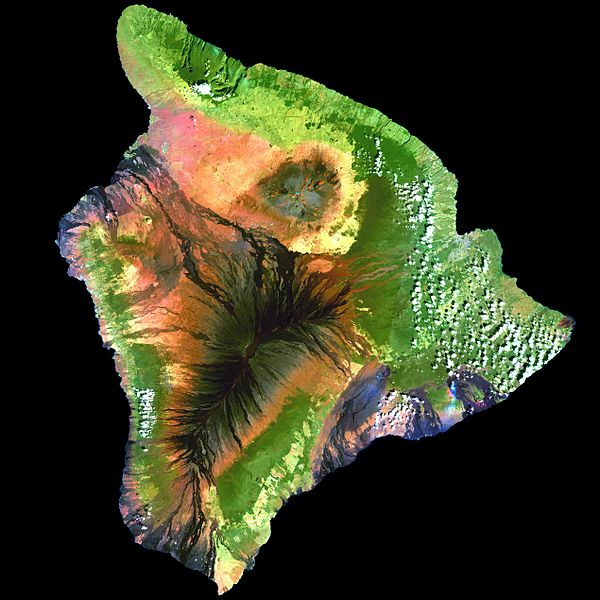فائل:Island of Hawai'i - Landsat mosaic.jpg

اس نمائش کا حجم: 600 × 600 پکسلز۔ دیگر تصمیمات: 240 × 240 پکسلز | 480 × 480 پکسلز | 768 × 768 پکسلز | 1,024 × 1,024 پکسلز | 2,048 × 2,048 پکسلز | 5,076 × 5,076 پکسلز۔
اصل فائل (5,076 × 5,076 پکسل، فائل کا حجم: 5.19 MB، MIME قسم: image/jpeg)
فائل کا تاریخچہ
کسی خاص وقت یا تاریخ میں یہ فائل کیسی نظر آتی تھی، اسے دیکھنے کے لیے اس وقت/تاریخ پر کلک کریں۔
| تاریخ/وقت | تھمب نیل | ابعاد | صارف | تبصرہ | |
|---|---|---|---|---|---|
| رائج الوقت | 11:59، 1 ستمبر 2009ء |  | 5,076 × 5,076 (5.19 MB) | Túrelio | saved with 95% quality (low compression), but without "progressive" option |
| 11:59، 1 ستمبر 2009ء |  | 5,076 × 5,076 (4.9 MB) | Bidgee | Fix thumbnail generation issue caused by progressive loading. | |
| 11:31، 1 ستمبر 2009ء |  | 5,076 × 5,076 (4.91 MB) | Rocket000 | reuploading | |
| 11:52، 27 دسمبر 2007ء |  | 5,076 × 5,076 (4.91 MB) | Avenue | {{Information| |Description=This simulated true-color image of the island of Hawai'i was derived from data gathered by the Enhanced Thematic Mapper plus (ETM+) on the Landsat 7 satellite between 1999 and 2001. |Source=[http://veimages.gsfc.nasa.gov/2712/l |
روابط
درج ذیل 2 صفحات اس فائل کو استعمال کر رہے ہیں:
فائل کا عالمی استعمال
مندرجہ ذیل ویکیوں میں یہ فائل زیر استعمال ہے:
- af.wikipedia.org پر استعمال
- ar.wikipedia.org پر استعمال
- ast.wikipedia.org پر استعمال
- az.wikipedia.org پر استعمال
- be.wikipedia.org پر استعمال
- bn.wikipedia.org پر استعمال
- br.wikipedia.org پر استعمال
- ca.wikipedia.org پر استعمال
- ceb.wikipedia.org پر استعمال
- cy.wikipedia.org پر استعمال
- de.wikipedia.org پر استعمال
- de.wikivoyage.org پر استعمال
- en.wikipedia.org پر استعمال
- Hawaii (island)
- Mauna Loa
- Landsat program
- Geoinformatics
- Puna, Hawaii
- User:Spikebrennan
- Portal:Hawaii/Selected article
- Portal:Hawaii/Selected article/11
- Wikipedia:Featured picture candidates/February-2008
- Wikipedia:Featured picture candidates/Big Island of Hawai'i
- User:Hawaiian Mafia
- User:Aoi/sandbox
- es.wikipedia.org پر استعمال
- es.wikibooks.org پر استعمال
- eu.wikipedia.org پر استعمال
- fa.wikipedia.org پر استعمال
- fr.wikipedia.org پر استعمال
- fr.wikivoyage.org پر استعمال
- ga.wikipedia.org پر استعمال
- haw.wikipedia.org پر استعمال
- he.wikipedia.org پر استعمال
- hi.wikipedia.org پر استعمال
- hu.wikipedia.org پر استعمال
- ia.wikipedia.org پر استعمال
- id.wikipedia.org پر استعمال
- incubator.wikimedia.org پر استعمال
- is.wikipedia.org پر استعمال
- ja.wikipedia.org پر استعمال
اس فائل کا مزید عالمی استعمال دیکھیے۔

